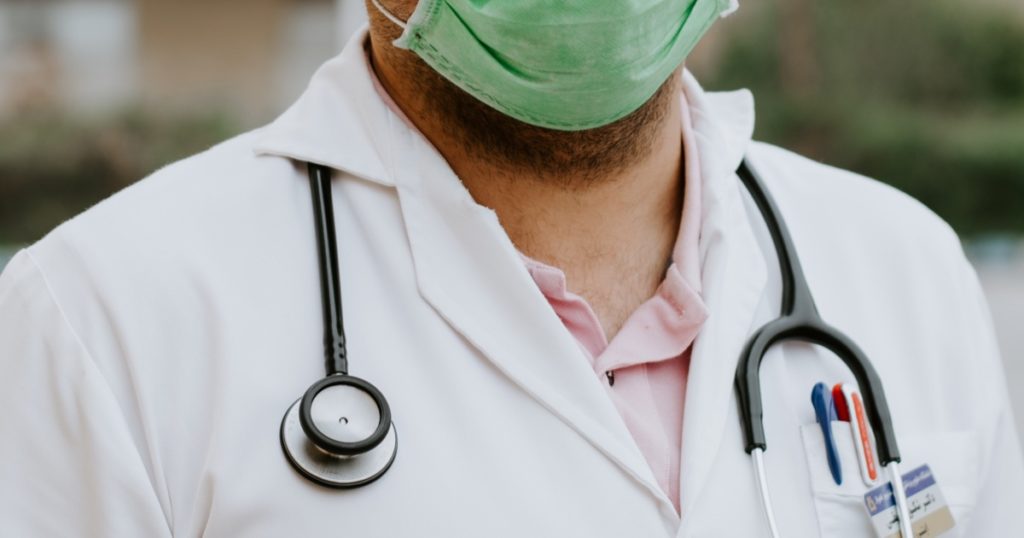Dr. Mike Mohammed is working as an internal and pulmonary medicine specialist. He shared some of the common trends and perceptions recently, which he noticed during his work with patients in the ICU during the last few months of this pandemic.
1 – Symptoms
Dr. Mohammed mentions that fever, cough, muscle aches, and shortness of breath are the most common symptoms that he has seen. Other less common symptoms present are nausea, loss of smell and taste, or diarrhea.
2 – Low Levels of Vitamin D
Dr. Mohammed explains that many hospitalized patients from COVID-19 have low vitamin D levels. However, he added that the connection is not equal to the cause. He also possesses the question: Should newly admit COVID-19 patients in hospitals be administered vitamin D right from the get-go?
3 – Extremely Transmissible Virus
You think it’s obvious, yes it is. Even worse, people can contract even in the ICU with a highly controlled environment with laborious safety rules. Dr. Mohammed also talked about one patient who was in ICU for another reason, not COVID-19. Still, after some time, he started to experience difficulty breathing and inflammation in the lungs. The patient’s test showed positive results for COVID-19, but it is not clear the virus spread within the ICU? The key takeaway seems to be how easily and fast this virus can spread, even with top-level precaution methods.
4 – Not Only for Patients
Dr. Mohammed has seen firsthand the emotional toll this pandemic has brought to patients and their families. The non-visitation policy makes it increasingly tricky for everyone involved. Dr. Mohammed expresses that the most challenging part of terminal COVID-19 patients is not the passing factor; it is dying alone and without proper goodbyes from their loved ones.
5 – Treatments
He said that the patients are given dexamethasone, remdesivir, recovering plasma, and even the therapeutic doses of blood thinners. He also mentioned that he couldn’t know if these treatments are making any difference in some way. Even if they are making some difference, it is not understandable. Therefore, scientific studies are always required in randomized control trials to understand if a treatment is working or not.
6 – Testing
Testing is described as a guessing game at this point by Hansen. An example of a patient is mentioned by him, who showed positive coronavirus tests three weeks apart. The reason behind this could be that the PCR test picks up the inactivated RNA of the virus, and it caused the testing to be positive, even though he is not spreading the virus anymore.
7 – Obesity
Dr. Mohammed said that many patients with COVID-19 are obese or unhealthily obese. Many obese people have obesity hyperventilation syndrome or sleep apnea; in these situations, the patients can’t exhale much of carbon dioxide.
8 – Mechanical Ventilation
The question lays upon at which points should patients be assisted with oxygen and breathing tubes. Thus far, the rule of thumb has been that if a patient displays any respiratory distress, it is placed on a ventilator. Then, the machine setting can be customized based on the oxygen level deficiency. The unpredictability of lung disease and impact due to COVID-19 has made it extremely challenging for doctors to determine the right treatment and assistance. One size does not fit all; symptoms and reactions to procedures have a large scale of variance.
9 – Recovery
Dr. Mohammed has monitored his patients’ recovery very closely as he is both a pulmonary medicine specialist and an ICU doctor. The damage to lung function is permanent in some patients, but he further added that the damage is slowly healed in other patients’ cases.
10 – An Unpredictable Virus
Dr. Mike Mohammed said that we still haven’t learned the virus thoroughly. We continue to learn the variety in symptoms, severity of disease variation, the difference in the timing at which a patient can recover, or the sudden complications and need for a breathing ventilator. In many cases, patients present clots and heal quickly compared to others. Some people’s test comes negative, but they have the virus.
Furthermore, he said that we are still entirely sure the antibodies are protective, and if so, for how long. Therefore, vaccines are not an assurance against the virus, although some medical trials reflect promising results. The best option now is to continue to use a mask and practice social distancing.


